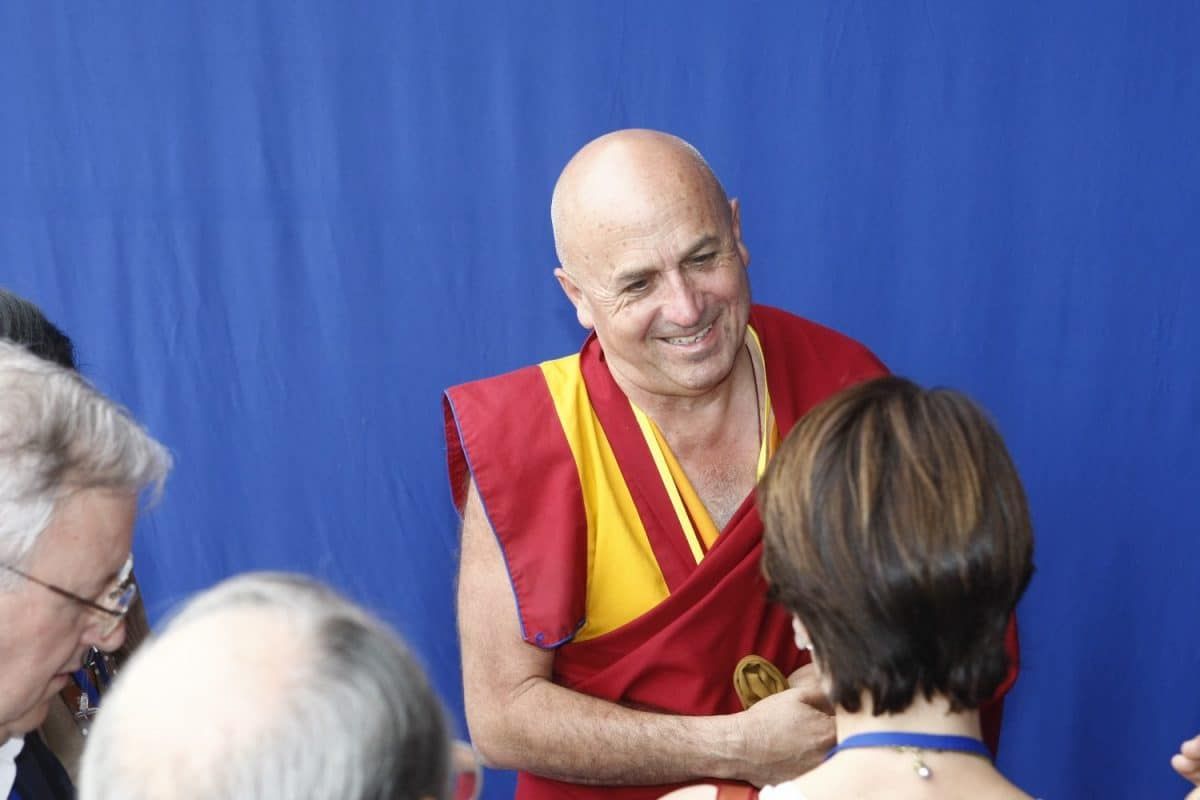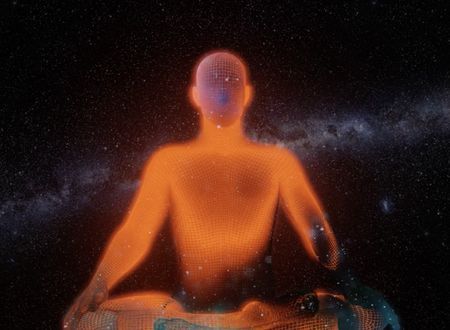Matthieu Ricard has been called the world’s happiest person.
This isn’t an award given out based on votes on a reality TV show, or to the influencer who gets the most likes on a social media post. This title was awarded to Ricard based on a twelve-year brain study on meditation and compassion led by a neuroscientist from the University of Wisconsin, Richard Davidson.
His skull was linked up to 256 sensors and scans showed that when Ricard was meditating on compassion, his brain produced a level of gamma waves — those linked to consciousness, attention, learning, and memory — ‘never reported before in the neuroscience literature’, according to Davidson.
Ricard’s brain also demonstrated excessive activity in the left prefrontal cortex compared to its right counterpart, allowing him an abnormally large capacity for happiness and a reduced propensity towards negativity. Basically, he had the ability to be happy and react to stress better than anyone else.
Due to this, they determined that Ricard was the happiest person on earth.
Who is Matthieu Ricard?
Ricard has taken an unconventional path — that of a Tibetan Buddhist. He was raised near Paris by his agnostic, intellectual parents. His father was a political commentator and his mother an abstract painter.
At the age of twenty, Ricard was intrigued by a documentary on Tibetan Buddhist masters and traveled to Darjeeling in the Himalayan foothills. It was there that he began the conversion to Tibetan Buddhism(Read more about the ancient Buddhist mantra om mani padme hum). So passionate was Ricard about his new life, he convinced his mother to join him. She abandoned France and became a Tibetan Buddhist nun. Except for his time at the Pasteur Institute in Paris, while he was completing a Ph.D. in cell genetics, Ricard has spent the majority of his time in the Himalayas ever since.
Besides acting as the French interpreter to the Dalai Lama, Ricard has written several books, including his first bestseller which shot him to prominence, The Monk and the Philosopher: A Father and Son Discuss the Meaning of Life.
Through his practice of meditation and mindfulness, Ricard has achieved what many of us long for — peace and happiness. So what can we learn from Ricard to become happier ourselves? Below are some lessons and advice from the world’s happiest person taken from his books and talks and how we can implement them into our own lives.
Train Your Mind
Ricard believes that happiness is a skill, and as such, does take some training and effort. Just like training for a marathon or learning a new skill, the mind requires training to be happy. This is most often done through meditation and mindfulness.
There may be a stereotype of someone sitting cross-legged under a tree, eyes closed chanting “ohmmm”, or as Ricard puts it, ‘meditation is not just blissing out under a mango tree.’ That is just one form of meditation. Meditation is really a way to cultivate a better understanding of how the mind works and can take many forms.
Ricard recommends Mindfulness-Based Stress Reduction as a way of training the mind. While this is an extensive eight-week course, there are other options with less time commitment. Ricard advises beginning with just fifteen minutes a day but committing to the practice for the long term.
“There is nothing highly mysterious about it, but it requires practice. Any solution that is fast and easy, achievable in five points and in three weeks, forget it. It’s like learning the piano, you have to practise . . . There’s no secret. It’s a whole life, but it’s worth doing.”
How to put this into practice
Few will have the time or perhaps the patience to undertake an extensive eight-week course. However, we can all spare fifteen minutes a day.
There are many apps (both free and paid) that offer meditations that can be done at home. They are wide-ranging and may include affirmations, or mindfulness practices, or just relaxing music and sounds. I would recommend trying a couple and seeing what resonates best with you.
I alternate between Calm and Headspace depending on my mood. Both offer programs that start with a few minutes a day and build up. A study from the American Psychological Association shows that meditation, combined with cognitive therapy, can help people who suffer from severe depression and reduce the risk of relapse by up to 40 percent, so it is worth trying.
Research from Carnegie Mellon University found that regular use of a mindfulness app can provide stress intervention when you’re in a pressure-filled situation.
Become More Benevolent
Ricard says that happiness should not be the pursuit of an endless succession of experiences and that endless pursuit results in frustration and unhappiness. He calls success “personal flourishing,” which is “fulfilling my deepest aspiration.”
Deepest aspiration is something more than longing for more money or a bigger house. His definition of success is self-fulfilment to affect others positively.
“It’s not the moral ground, it’s simply that me, me, me all day long is very stuffy. And it’s quite miserable, because you instrumentalise the whole world as a threat, or as a potential sort of interest [to yourself].”
How to put this into practice
Think of where you can help someone else. There is always a need for charity, but there are many ways to put others first.
As a writer, one thing I implement is that I work with new and emerging writers and help edit their work. I advise them on how they can best perform. I assist with research. None of this will win me a Nobel Peace Prize, but these are small steps in which I can help others be happy.
Try and perform at least one selfless task each day. It doesn’t need to be a big gesture. It doesn’t need to be a donation. There are many ways to ‘personally flourish.’
There are also other benefits — a comprehensive study by Christian Smith of the Notre Dame Science of Generosity Initiative, of 2000 individuals from diverse classes, races, and neighbourhoods showed that people choosing to be more emotionally available and generous to others were shown to be in 48% greater overall health.
Don’t Worry About Small Things
How often do we find ourselves bogged down on small issues? A post on social media that upsets us, spilling our coffee, a bad day at work. All are inconsequential matters in the scheme of things that our minds work to exacerbate. Many of these things we can’t control. However, we can control the way we react to these things.
One of my favourite sayings is don’t make mountains out of molehills, something which can often be harder to do than said. Ricard uses a different metaphor which also works well.
“Oh, a small thing happens somewhere in the landscape, okay, it’s there, but so what?” So then, it doesn’t affect you. It’s like a handful of salt. If I put it in this glass, it becomes undrinkable. So [it is with] a narrow-minded, self-preoccupation. But if my mind becomes like a big lake, then the same handful of salt doesn’t make much difference; it doesn’t make the whole lake salty. So just broaden your mind.
How to put this into practice
If something small goes wrong, see it as a minor hiccup, a blip on the radar. Acknowledge it, and learn from it but swiftly move on. There is no benefit to stressing over it or fixating on it.
Don’t let your mind replay over and over again when something goes wrong. Ask yourself will this matter to me in three years? Will it even matter in three months? Dr. Srini Pillay recommends in the Harvard Medical Review, writing down your worries as another way of freeing your mind.
So the first step is to ask yourself if it is really worth worrying about the issue and then writing it down. Once it is on the page, you can recognize it as a molehill and let your mind move on.
Enjoy What You Have
The focus should always be on what we have and not worrying over what we do not have. Society is focused heavily on purchasing the newest model, the latest gadget, and the best product. Too often we look to the next purchase rather than enjoy our current one. We believe what we have is now inferior, and our excitement disappears.
This concept has been termed the hedonic treadmill by P Brinkman and DT Campbell. On a treadmill, we must keep running to remain in the same spot. On the hedonic treadmill, we must keep running toward acquiring more things to maintain our current levels of excitement.
If we are always looking to the next thing, we will never attain happiness, like an addict, we will always be craving the next hit.
How to put this into practice
Implementing this should be simple. Heidi Grant Halvorson Ph.D. from Psychology Today shows studies that more items can actually make you feel worse. It makes you savour each item less and less, sort of like a diminishing return of enjoyment.
Take joy from what you have: your friends, your family. Have pride in your home or your car and look for the positives in these. Don’t rush to get the next model iPhone but be content with your current model.
Monitor Your Thoughts
Ricard has many life lessons, hence why he has written several books, but I have limited to the five I most identify with. This last one is the hardest to do but, in my opinion, can deliver the most benefit and builds on the earlier points.
As Ricard himself put it,
“We deal with our mind from morning till evening, and it can be our best friend or our worst enemy.”
If we can monitor our thoughts and feelings, what we imagine, and our internal monologue, we can begin to alter how we feel and increase our ability to be happy and to be successful. It can be hard, but if the first step listed — training the mind, is practiced, then we can gain deliberate control of our thought processes.
How to put this into practice
If you want to be successful, you need to think, feel, and act successfully.
Start by thinking happy thoughts or saying positive affirmations for 15 minutes each day. Instead of having brief happy thoughts, concentrate, and stay focused on these positive emotions. There may be distractions, but try not to let your mind wander.
This can be broken up into one fifteen-minute session or a few short five minute sessions. It is about conditioning the mind over this time.
I say these three each morning and at night and they work for me.
- Whatever is happening now is happening for my greatest good.
- Today is a beautiful day.
- I am at peace.
It may feel strange at first. It may be at odds with your instinct. Honestly, I felt silly the first time I did it but try it. You’ve got nothing to lose, and so much to gain.
According to research in the Personality and Social Psychology Bulletin, a few positive affirmations before a high-pressure meeting, can calm your nerves, increase your confidence, and improve your chances of a successful outcome. By monitoring our thoughts, we can recognize and then eliminate unproductive patterns or processes. Our thoughts precede our emotions, and we want to exude more positive emotions.
The Takeaway
Ricard doesn’t like the title he was bestowed of ‘happiest person on earth.’ At first, he asked not to be referred to by that moniker. He discussed it with one of his teachers who gave him the advice of going with it and making the most of it. And so he has used the opportunity to teach people how to be happier.
There is no one quick and easy solution, but there is a process that has worked for him and one that he shares widely. While most of us can’t pack in our lives and move to the Himalayas or to a monastery we can all find the time to practice some of what Ricard preaches.
All it takes is fifteen minutes a day. Just like any endeavor, it requires training and hard work, but if the end goal is happiness, it is definitely one worth training for.
“Few of us would regret the years it takes to complete an education or master a crucial skill. So why complain about the perseverance needed to become a well-balanced and truly compassionate human being?”
Picture By MEDEF — https://www.flickr.com/photos/besoindair/2806307492/, CC BY-SA 2.0, https://commons.wikimedia.org/w/index.php?curid=93113711









Comments & Discussion
10 COMMENTS
Please login to read members' comments and participate in the discussion.